The Great Hypocrisy - Racism in Arab Communities

Written by Jenin Al Shalabi
Jenin Al Shalabi is a speaker and writer who is passionate about highlighting diverse stories that break barriers and ignite change. Within her school community, Jenin established a school-wide Diversity, Equity and Inclusion council.
I am seven years old. My grandmother and I drive through the streets of Jordan. I see billboard after billboard with images of women with fair skin, blue eyes, and Eurocentric features proudly plastered across them. None of these women look like the Arab women I know. All of them preach strange creams that apparently lighten their skin.
I don’t think much of it.
I am ten years old. I sit in a classroom and listen as a teacher mocks a student for having monolid eyes, calling her eyes ‘little Chinas’. We all laughed it off.
I am twelve years old. I frown as I hear family members mimic and mock a typical ‘Indian’ accent, coupled with exaggerated hand movements and facial expressions. I scowl, but I don’t speak up.
This is just the tip of the iceberg. Racism is a virus that has embedded itself into the heart and soul of Arab communities, thriving on ignorant perpetuation.
The matter of the fact is that racism is, and always has been, deeply ingrained into Arab communities. It’s ironic: I have, on countless occasions, heard fellow Arabs express great frustration at the amount of bias and prejudice they received from those outside their communities. Arab communities have long been the target of belittling stereotypes, harmful remarks, and heinous micro aggressions.
So – how can these same communities then so freely indulge in displays of racism towards other minority groups? How can we eternalize the same racism that has brought down our own communities for so long?
Many Arabs don’t feel compelled to question their bigotry, because it has been so deeply ingrained into our cultural hegemony, that it becomes second nature. Take a quick flick through some Arab TV channels – the only time you would see people with darker skin tones was when they were portrayed as servants or villains. Ideally, the actors had porcelain skin that glistened on screen. Despite the fact that in the US alone, 20% of the Muslim population is Black. TV constructed an unobtainable beauty standard for the Arab population – teaching them to equate dignity with Eurocentrism.
And it doesn’t stop there – growing up, many Arab children would have been introduced to a desert called “Ras ilabed”, which literally translates to ‘the head of the slave’. This dessert is composed of a marshmallow center dipped in chocolate, said to resemble the head of a slave due to its dark color. Thousands enjoyed this sweet without caring to confront its racist origins.
All the examples I’ve provided above may seem like mere jokes, silly comments, or meagre coincidences. But the actuality is, these insignificant occurrences are indicators of larger webs of underlying prejudice that can easily spawn into something much bigger, and much more horrifying.
A prime example is the murder of George Floyd – which shone a light on the ever-growing racial prejudice that dominates many corners of society today. Many of us have become increasingly familiar with the murder via social media.
But, something that the media might’ve neglected to tell you: the corner shop that had originally called the police on Mr. Floyd was run by a Palestinian American man, Mahmoud Abumayyaleh. Mr. Floyd was murdered right in front of his store. We enabled the atrocious murder of an innocent Black man. We stood on the sidelines. We allowed our deeply ingrained prejudices to interfere with our humanity.
We think we aren’t a part of this story, but we are.
We cannot complain about the hatred towards Arabs that has been promoted by Western media if we are willing to project that same hatred onto other communities. Contributing to a cycle of such hatred is the epitome of hypocrisy.
Racism in the Arab community doesn’t stop at anti-blackness, unfortunately. The Arab community has also been an epicenter for appalling portrayals of bias against South Asians. All this, despite the fact that Arabs and South Asians have many cultural beliefs and practices in common.
I went to a predominantly Arab school, in which there were only two South Asian students in our entire year. These students were constantly isolated and ostracized. Any open expression of their culture was met with frowns and whispers. Living in Dubai, I had always believed the country to be a hub for diversity; a cultural melting pot. Hence, I found it sickening that in what was meant to be such a culturally aware landscape, many felt it difficult to move past archaic stereotypes that they had been spoon-fed.
What do we, as a community, gain from ostracizing and belittling other communities of color? Should we refuse to acknowledge the poisonous biases that lay deep within all of us, we will be feeding a cycle of hypocrisy and contributing to the suffering of many.
The Cure for What Ails Us: Reigniting a Healthy Sense of Well-Being and Belonging in Schools
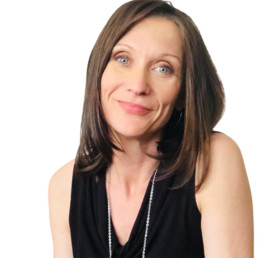
Written by Jennifer Johnson
As a parent, a former educator, an entrepreneur and a passionate change-maker, Jennifer is on a mission to empower young people to be their best selves to create a better world. She has an M.A. in Education in Curriculum, Teaching and Organisational Learning.
Since launching the Captains & Poets Program in schools in 2019 we have been exploring the ins and outs of what it means to be human – and all with the backdrop of a series of crises at home, at school and on the world stage.
The erosion of the social fabric in schools over the past two years has led to notable increases in issues around mental health and well-being, and in bullying and hate crimes. While the two may or may not be directly correlated (a topic for another blog perhaps), what they have in common is the unprecedented level of uncertainty, the minimizing of interpersonal connection, an absence of ritual, a sense of complacency and rudderlessness that has set in, the shrinking of young people’s worlds and the associated loss of opportunities for identity formation – do I need to go on?
The premise of the Captains & Poets program is that there is a unique Captain and Poet in each and every one of us that, in partnership, enable us to be our best, most authentic selves. And, when the Captain and Poet are operating in full partnership, we are better able to live from a place of “emotional courage” and “inspired action”. Today, we need Captains and Poets everywhere.
Emotional courage is about being brave enough to be vulnerable, to feel the uncomfortable emotions and follow your inner truth in the face of conflict with the outside world.
Inspired action is the ability to live from a place of meaning and purpose, where our values inform our actions, where we let our passions guide us. It is about truly being the change you want to see in the world.
To quote 12-year-old Sam in our documentary video: “When the Captain and Poet come together, they give you courage which is different than confidence. Because confidence is thinking you have the ability to do something, but courage is knowing what’s right in your heart.”
But how do we thrive when the world is in such a state of upheaval? One of the main things that keeps me afloat and even thriving in these times is having a sense of purpose and agency in the world with the work we are doing at Captains & Poets. As challenging and depleting and heart wrenching as these times have been, they have helped us peel the onion on what we all need, not only to survive, but to thrive. We are all at risk of developing the same set of symptoms in these times: languishing, anxiety, complacency, overwhelm.
What we have learned in the delivery of the Captains & Poets program thus far is that many of the issues society aims to remedy seem to lead back to the same thing – having a positive sense of identity in the world. The journey to Self is a lifelong one and at its core is self-awareness and the ability to connect with the world around us in meaningful ways that have a positive impact on ourselves and others.
The message we need to send to young people now more than ever is that they are whole, resourceful beings who have everything they need inside of them to thrive; and, that what they yearn for deep inside is similar in spirit to what others want. Perhaps now is a time in history where we can all draw on our collective Poets to guide us, and our collective Captains to bring that vision to life.
Imagine a world where we all lived from a place of emotional courage and inspired action. We would take care of ourselves and each other. We would derive an innate sense of belonging from the shared journey we are on. We would seek to understand before judging. We would be more fully expressed in who we are. Connection with ourselves, others and the world around us would be our lifeblood.
While it may sound idealistic, this is the human journey we are on. For some of us it takes a tragic event or a significant life change to connect more deeply with what matters most and to begin operating with a greater sense of purpose. But what if we could make having a sense of agency in the world more accessible for everyone?
Perhaps the cure for what ails us is closer than we think. The phrase we use to help young people embrace and celebrate their uniqueness is “We are all the same because we are all different.” We all want to be seen, to connect, to matter. And we all have a Captain and Poet inside of us ready to help us heal.
A Call for Action

Written by Esther Mustamu-Daniels
Esther Mustamu-Daniels has 20 years of teaching experience working in London and the Middle East as a Class teacher, Education officer, Middle Leader and DEI Lead. Currently working at British School Muscat, Esther co-leads the DEI work across the whole school.
I read the most horrific story of a child being sexually assaulted by police in her school. Her teachers did nothing to protect her. Her parents were not called. She was strip searched while in the middle of an exam while on her menstrual cycle. She was not allowed to clean herself after. She was not checked upon to see if she was ok and then she was sent back to her exam to continue it. All by people who are supposed to protect and look after her. All I kept thinking about was what if this was my child? This happened two years ago and the conclusion of the investigation is that ‘racism was likely to have been an influencing factor’.
Unacceptable. The child is now in therapy traumatised by these events and now self harming.
What if this was your daughter? What would you do?
I have been thinking about the reports of Ukraine. How our children feel hearing these reports. Not only of the African students who have been denied entry on to trains and through borders but also of the reporting. How black and brown lives are deemed lesser and how this is normalised in our media. What impact is this having on our children? On all of them? How wars in certain countries are acceptable but in others ‘horrific’. How western media is more sympathetic towards a ‘type’ of refugee. What are we sharing with our children? With all of them? What are we teaching them? What kind of world are we showing them exists?
There are so many stories in the media that show our children the unjust and prejudiced way of the world; how can we counteract this? How can we show them that they are all important? That their lives matter? Put yourselves in their shoes and think about the messages that they are receiving. Think about what you can do to counter that.
If you are a teacher, what do you show your children? The stories and images you choose to share have a huge impact. The authors you share and the lessons you teach that include positive role models, narratives and histories will all have an impact. Are you considering the impact that current events are having on your children? What are you doing to support them? Are you calling out if you see racist or biased behaviour?
If you are a leader, what are you doing to counter these messages? Are you holding spaces for people to share and raise concerns with you? Are you actively trying to ensure that your establishment does not reinforce these messages? What policies do you have in place? What training do you have in place? If you are not aware or are not sure how to navigate these situations, are you seeking support and advice from those who do know?
This is a call for action to break these biases. Are you aware of what some of your children and colleagues may be facing? Are you aware of some of their experiences? Could you even be responsible for some of their experiences? Imagine it was you? Imagine it was your family? What would you do? What will you do? What action will you take? What will you do today to support our future generations and all of our children and adults who are impacted and continue to be impacted by the traumas they witness?
Take action for what is right in whichever area you occupy. We all have the power to take this action and make a difference so that the bias stops. So our children and our communities are safe; psychologically and physically. What will you do?
Making the DEI mission of your school mean more than just words.
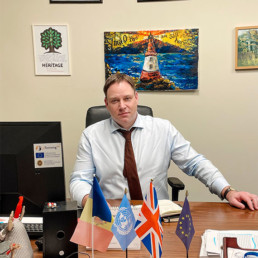
Written by Rob Ford
Rob is an educator for nearly 30 years, a history and politics teacher, a school leader in various schools in the UK and was principal of Wyedean School in the UK, before being appointed as Director of Heritage International School group.
“Our lives begin to end the day we become silent about the things that matter”. MLK
As my colleague sobbed with frustration and emotion in my room one afternoon, after a long day at school, going through what had just happened in class, I realised in that moment how powerless I felt there and then as a person but I knew how powerful my school’s culture, ethos and policies truly were in these awful moments. More than just words when put to the test to support my colleague as she asked for my help as a school leader.
My colleague, an international teacher, had been on the receiving end of a racist comment and it underlined to me just how much work we still have to do in our schools and communities to ensure such hurtful and offensive moments don’t happen especially when it comes to the words, beliefs and actions of children and young people in our care.
When we found the students responsible and put in place the necessary sanctions & follow up actions warranted, the comment from one parent said this to try and downplay the incident; “It’s like he was at the same table when the waiter was abused but all get thrown out of the restaurant”.
Illustrating perfectly with the choice of words that even the most liberal, educated, wordly wise and enlightened of school communities, especially those with many nationalities and a strong global outlook, need to continue to work together with the whole community, to challenge and change such mindsets. In contrast, the students were actually very contrite, apologised, owned their responsibility and repaired the damage done with their teacher who was prepared to move forward with them on this basis.
We cannot ever be silent on such issues as school leaders, nor should we feel powerless individually to tackle these issues successfully. We need to prioritise clear policies, culture, staff training and meaningful education in schools around issues & attitudes such as racism, nationalism, prejudice and hate that, unfortunately, have become more widespread in the 2020s around the globe. Doing nothing or hoping it won’t ever be something you will have to address is not an option either for any school leader.
Your school culture is not international because it says it in the title.
It is always quite surprising how many school leaders feel that issues around racism will never affect them because they are “an international school”. This is a very false assumption as much as stating how many different nationalities are in the school community. It doesn’t mean a school is diverse, equitable or inclusive and it’s a “lazy assumption” and derelict to avoid having a practical strategy in place because you say you are in the school’s name. Words matter here.
You need a robust Diversity, Equity and Inclusion Policy in place.
Your DEI policy should sit alongside the handful of ones, like Safeguarding, SEND, Teaching and Learning, Complaints, that you have in crumpled paper form, covered in notes and highlighter on your desk as a school leader because they are used as part and parcel of daily school life. There are some really effective, comprehensive and robust DEI policies out there to look at and adapt to your school.
Your DEI policy needs to be regularly reviewed, a governor responsible, a senior leader made responsible for it, and for it to be made publicly available, for your whole community to be aware of it with the key points clear. Get good outside experts to scrutinise it and for them to challenge you as a leader, your governors and your team on it as COBIS did to me and my school last year as part of our standards accreditation.
You need regular CPD for staff awareness and all your team believe and operate in this culture.
I couldn’t imagine annual staff training in August or regular CPD throughout the year, without time spent on our DEI, any more than I would leave safeguarding, the fire drill or Teaching and Learning out of what is central in the education and duty of care towards children. There are some incredible voices and forums out there for schools to follow and engage with and bring that outside expertise and experience to your school. Especially for schools and communities operating in homogenised and monoglot environments. Your DEI policy needs to be even more central in your strategy.
There are some incredible voices and forums out there for schools to follow and engage with and bring that outside expertise and experience to your school so tap into it; for example we have used Jon Gibson and Backdrop Education for staff training around inclusion and equity, America House in Chisinau extensively on diversity training, our governors have worked with Jackie Beard, a NLG and used the DEI programmes from NGA. COBIS have been working with Angela Browne and Hannah Wilson to deliver DEI training in schools and we are signing staff up for this outstanding & highly recommended programme for the courses this year. We also follow Hannah’s work in offering free DEI conferences and webinars to educators in the UK and around the World.
Raise student (and parental) awareness regularly, celebrating and commemorating our global, diverse communities in school daily life.
This is where you need to be prepared to be less than silent, especially in a World of labels thrown at schools such as “woke” or “cancel culture” for daring to celebrate and commemorate events in the global calendar such as Black History Month or Holocaust Remembrance. Do not shy away from what may be perceived as difficult topics or fearful of reactions.
In those school boards in the USA, where some parent groups are challenging schools for holding Black History Month events this February, because they believe it is teaching “CRT” (critical race theory), school leaders are tackling this challenge head on legally as we finally see this “false equivalence” called out and for a many, a hill definitely worth a stand on.
In Eastern Europe, the ugly racism black English footballers endured recently playing Hungary, became a very good debate topic for our IGCSE and A Level students and I was proud to see all of them call it out for the hate and ugliness it was. These are not the values these students want or their part of the world to be associated with.
We also are facing in Eastern Europe the contextual challenge of the conflict of Russia towards Ukraine, with students of both countries in our community, so we have worked with teachers on how to handle difficult questions on it and deal with issues that may arise from students in a safe arena of dialogue. This is the very reason why we educate children.
Make your community more inclusive and diverse.
This should include a recruitment policy that is more than just centred towards white Anglo-American educators and truly brings the global community to your school. I still hear the positive words of one of my students when she said coming to Heritage is like going abroad each day.
The same is about the speakers you have in school, the role models for children chosen and what you study in the curriculum. I have no issue with special days or months for events in the global curriculum calendar because it is a good excuse to highlight the work that is consciously there daily and it is not just for one day.
Schools shouldn’t worry about the odd criticism on social media because you celebrate or commemorate one day either, as long as this isn’t the only time some topics or events are looked at and studied. A “one off” is not a school culture but it is a good starting point to build on. Throughout this academic year, the UN’s #FightRacism campaign has underscored so many wider curricular events especially through whole school assemblies and cross curricular days we have aligned with as a school.
Conclusion.
We should live up to our school’s mission, culture and ethos, especially where we want future leaders to lead with the very values we claim we are about in our schools to young people including diversity, equity, justice and inclusion for a better future. Or as school leaders we will end up remaining silent on what matters most.
Cultural Intelligence
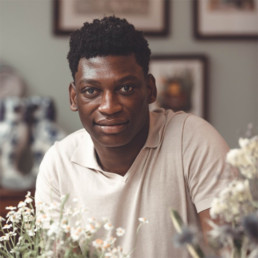
Written by Wangu Chafuwa
As a first generation immigrant, Wangu’s vantage as an insider-outsider led to a fascination in people, social relations and culture, which led to advocacy work with the British Youth Council. Wangu now uses his social consciousness and anthropological perspectives to bring human centred insights to the world of work.
Culture – and how we move through it – has also become one of the tabloids’ favourite news beats. How often do we see articles bemoaning the rise of cancel culture or so called culture wars? It’s understandable why lots of us feel nervous about approaching culture.
Even in itself culture is a difficult term to define. The Oxford English Dictionary contains 6 distinctly separate definitions of it: ranging from ‘the civilization, customs, artistic achievements, etc., of a people’; to ‘the artificial development of microscopic organisms, esp. bacteria, in specially prepared media’; to ‘the training, development, and refinement of mind, tastes, and manners’.
Culture is one of those funny little terms we all vaguely seem to understand but struggle to pin a precise meaning to. Which poses a problem as we’re routinely expected to navigate increasingly complex cultural environments.
It’s the reason why Cultural Intelligence (or CQ, like IQ) has been described as one of the essential leadership skills of the future. But how well do we understand what that really means?
There’s a phrase that’s probably misquoted to Einstein that says ‘intelligence is not the ability to store information, but to know where to find it’. Often when people hear Cultural Intelligence they think that it means having an itinerary of do’s and don’ts for cross cultural
interactions. Having this knowledge is obviously helpful, but the thing about Cultural Intelligence is that it is a practice – it has to be applied.
“But how?”, I hear you utter in anguish from beyond the screen.
In his 2011 book, “The Cultural Intelligence Difference,” Dr David Livermore highlights four capabilities to develop to effectively practise Cultural Intelligence:
CQ Knowledge relating to knowing different cultural expectations and the nuances of intersectional cultural expressions.
CQ Strategy relating to your ability to plan and prepare for multicultural interactions.
CQ Action relating to how appropriately you adapt your behaviour to accommodate different cultural contexts.
CQ Drive your interest and motivation to keep finding out more about different cultures.
Cultural Intelligence is the acknowledgement of the fact we all come from different places that hold deep meaning to us and a respect for how this shapes our individual perspectives. No one wants to be treated in aggregate. Practising Cultural Intelligence allows us to see people in their rich difference rather than one in an anonymous blob.
Our struggle to get to a singular definition of culture isn’t a failure to express, it’s a representation of the living, transforming and always shared experience that is culture.
We can see this buzzing diversity inherent in culture in the sheer number of different cultural expressions living around us. In all this contrast and colour is an infinity of possibilities. And the ever-present potential of friction.
The capabilities underpinning Cultural Intelligence may sound a bit jargony but luckily underpinning them is an innate capability to navigate our inherent differences. We are social creatures – all possessing empathy muscles that hardwire us to build bridges between us.
Teachers Working from Home - Working Hard or Hardly Working?
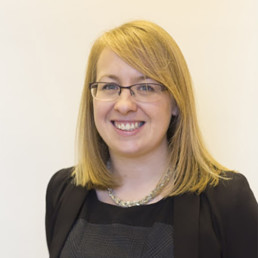
Written by Lindsay Patience
Lindsay Patience is the co-founder of Flexible Teacher Talent. She is a Teach First Ambassador, a School Leader and a mother.
A recent TeacherTapp question asked how people felt about heads, senior leaders and teachers having a regular day to work from home. Here are the results:
Should HEADTEACHERS be allowed a regular day to work from home?
13% Strongly agree 30% Agree (43%)
22% Disagree 22% Strongly disagree (44%)
Should SENIOR LEADERS be allowed a regular day to work from home?
11% Strongly agree 30% Agree (41%)
27% Disagree 22% Strongly disagree (49%)
Should TEACHERS be allowed a regular day to work from home?
14% Strongly agree 33% Agree (47%)
30% Disagree 14% Strongly disagree (44%)
Obviously, given my love of all things flexible working, these responses left me perplexed and frustrated. Why shouldn’t heads, senior leaders and teachers work from home one day a week? What if they would do a better job if they worked from home? What if that meant we had better retention, recruitment, motivation and productivity in the education sector? Why do more people disagree that senior leaders should be allowed to work from home than they do for heads? What could it be that made people disagree with this?
Is it because they think school staff need to be in school?
Of course, they do. But all the time? Not all of our working time is in front of out pupils. In fact, heads have the least contact time in the classroom or elsewhere with students, so they have the greatest opportunity to work from home. Similar for senior leaders. Working from home is more possible for them because they don’t have so many face-to-face lessons.
The lockdowns showed us (in a very unplanned and unexpected way) that a great deal can be achieved away from the school site. It obviously was not an idyllic situation and outcomes and working conditions were often inferior to what we could have achieved in school, but there were some aspects that showed us we didn’t need to all be on site, all of the time. Staff communication, briefings, CPD, parents meetings, using software for assessment and for meetings and many other things. If we could make some of those things work when we were thrown with no warning into such an unprecedented situation and some of them were effective, just imagine how successful they might be if they were planned and utilised strategically. Working from home is one of those things.
Is it because the more senior you are, the more important it is that you are in school?
Heads and senior leaders often have administrative or strategic work to do that would be better conducted privately, quietly, uninterrupted in a work environment that suits them. This may not be in school. This might also be true for teachers, why does PPA have to be on-site? I have never been able to plan effectively at school. My best planning is when I am at home with time and space to reflect and I find it more conducive to creativity. I mark best in cafes, in fact it is the only place I can productively mark away from distractions at school and home.
Maybe those who disagreed just did so because it doesn’t seem possible?
Full time teachers with 10% PPA get half a week out of class, not one full day. So maybe they interpreted the question as one day a week and immediately said no as they assumed it meant time away from classes?
Or maybe there is something else going on here as mentioned in the Teacher Tapp blog on the findings. They mention the “phenomenon that people typically don’t like it when their colleagues are given a benefit which won’t be extended to them.”
Why did more people disagree about senior leaders than heads? Is it something about the job role? You have to be present and in school dealing with issues as they come up? More important as a senior leader than as the head?
Is it because we just don’t trust people to work from home?
Media coverage of the pandemic showed that there is a sentiment that those working from home rather than the office are not working as hard. There are images of people lounging around in their PJs, looking after their kids at the same time, generally not working hard. But really this just boils down to lack of trust in people as professionals. So what if someone works in their PJs if they still get the work done, maybe they are more productive in their PJs. Accountability is important but it doesn’t disappear when people work from home. They still have to do the work and get the results. Some managers just find it problematic if they can’t heavily supervise and monitor workers and so don’t trust them to work from home. Echoes of this are shown again with Teacher Tapp data from the following week suggesting only 15% of teachers are allowed to have their PPA time off site. Why is this figure so low? Why can’t teachers do their planning, preparation and assessment time outside of school? It is dedicated time when they are not to be scheduled for contact time or other commitments so why can’t they have more autonomy in where and how they use this time?
The positives of working from home
Well, here is why I was strongly agree that some time working from home would be good for teachers, senior leaders and head teachers:
Working from home is more productive
A study by Standford of 16,000 workers over 9 months found that working from home increase productivity by 13%. This was attributed to a quieter more convenient working environment and fewer breaks and sick days. Workers also reported improved work satisfaction, and the rate of employees leaving was cut by 50%.
77% of those who work remotely at least a few times per month show increased productivity, with 30% doing more work in less time and 24% doing more work in the same period of time according to a survey by ConnectSolutions.
A study conducted by Ask.com found that 86% of employees prefer to work by themselves when they are trying to be as productive as possible. There are many tasks that would be much easier without constant interruption. Schools are noisy, busy places by their nature. They are also not always particularly well kitted out or designed as staff work spaces.
And in schools, better productivity, means better outcomes for our pupils, but also better use of public money.
Working from home attracts and retains a diverse staff
What if your heads, senior leaders and teachers can’t work full time? What if they don’t want to work full time? Without flexible working, you miss out of candidates, you miss out on diversity, you miss out on experience and perspective and the opportunity for effective succession planning and development.
Working from home makes us happier
Another US study reported that 82 percent of telecommuters said their overall stress level was lower, while 80 percent reported higher morale because they worked remotely. Other reported benefits of working from home include: less commuting time and more time for wellbeing. Time spent working from home can mean more time for hobbies/pets/time with family/exercise. We are better teachers if we are happier, which is better for students, and relationships, and retention etc.
Also, just give the people what they want! 91% of the UK’s office workers would like to work from home at least part of the time. I know teachers aren’t office workers as such but such overwhelming positivity about working from home must be somewhat reflected also in out staff bodies. It is also worth considering that if office jobs continue to offer hybrid work environments but schools do not, it will be harder to recruit career changers and those currently working in schools who are looking to leave may find more attractive working conditions in other industries.
So that turned into quite a long essay in support of working from home! But I feel strongly that if the education sector doesn’t embrace flexible working and make changes to facilitate it then our schools are missing out on diversity, retention, motivation and productivity that is crucial for our children. Working from home doesn’t mean never being on site, flexible working doesn’t mean teachers walking out on a class in the middle of the day. Our traditional school structures don’t lend themselves well to flexible working but more importantly neither do our attitudes and the cultures in our schools. Flex can work in schools, there is a growing evidence base of case studies showing this, but we need to change how we think about flexible working. Embrace the benefits and make changes to allow them to be taken advantage of.
Working from home reads/references
Has the use of VAK changed at all since 2018? – Teacher Tapp
Surprising Working From Home Productivity Statistics (2022) (apollotechnical.com)
How Working from Home Makes People Happier – Remote.co
The productivity pitfalls of working from home in the age of COVID-19 | Stanford News
Ten Facts You Should Know About Telecommuting (baselinemag.com)
Coronavirus: Why some people want to keep working from home – BBC News
How East Stanley Primary School used Rainbow Laces to build a more inclusive environment for its pupils

Written by Adam Walker
Adam is a Primary Teacher at East Stanley Primary School in Durham and is a member and advocate of the LGBTQ+ community.
‘The number one thing is the inclusivity benefits of the resources. Not having pupils question who is playing football and building a much deeper level of respect for each other.’
Creating an inclusive environment for pupils is a top priority for many teachers and their schools. As we celebrate LGBTQ+ History Month, Adam Walker, a teacher from East Stanley Primary school tells us about how using the Rainbow Laces resources, from Premier League Primary Stars, helped create a more inclusive environment for his pupils – increasing their understanding of gender stereotypes and the LGBTQ+ community.
“We had an incident at a football match a few years ago where a pupil from our school called a player from another team a homophobic slur. It was at this point we realised that we needed a solution that we could use to support our pupils in understanding the importance of being inclusive. After a long search to find the right solution, we came across the Rainbow Laces resources from Premier League Primary Stars. A bank of free resources that could educate our pupils around the importance of inclusivity, challenging stereotypes and being a good ally – it was exactly what we were looking for.
At East Stanley we are seeing more girls wanting to get involved in sport. So it was great to see Premier League Primary Stars use male and female professionals in their resources to show balanced representation of real sport. Activities such as ‘Do it like a…’ and ‘Be an ally’ have been popular with the pupils. It has especially given the girls something to look up to and through challenging stereotypes we have mixed teams playing football with a deep level of respect for each other.”
East Stanley has used the Rainbow Laces resources in PSHE lessons at the school to create a more open environment: “The Rainbow Laces resource pack helped us in our PSHE lessons when talking about what it means to be a part of the LGBTQ+ community or discussing gender stereotypes. Now all the pupils are aware of different types of representation; they know that it doesn’t matter if you are homosexual or heterosexual, a boy or a girl, your ethnic descent, or what your first language may be.”
As a member of the LGBTQ+ community, Adam appreciates the difference that resources like Rainbow Laces make: “Now that I have these resources I reflect and think that if material like this had been available when I was in school, it would have helped me to identify and feel more comfortable as a result of inclusive topics being spoken about openly. The more we use material like this in primary schools, the more we will create a better environment for everybody to live freely. It is only going to have a positive influence.”
Speaking about whether he would recommend the resources to fellow teachers, Adam said: “I would 100% recommend them. Knowing how the PSHE curriculum works, Rainbow Laces has been great for us. For other teachers who are looking to increase inclusivity at their school, we have loved the outcomes the resources have given us. Premier League Primary Stars has a wide variety of resources too and there is also the opportunity to build Rainbow Laces – and others resources – into additional lessons around Maths, English and PE. We have seen a real difference and our pupils are happier as a result.”
At the end of 2021 and during the Premier League’s Rainbow Laces campaign, Premier League Primary Stars launched a new resource pack called ‘Rainbow Laces – This is everyone’s game’. The pack, perfect to build into PSHE lessons this LGTBTQ History Month, includes an educational film, and supporting resources, celebrating LGBTQ+ football fans and showcases the power of football to bring people together. The film tells the story of a young Sheffield United fan and member of the LGBTQ+ community, who talks about what football means to her and how it has played a part in helping her to feel proud of who she is.
Premier League Primary Stars has a wealth of dedicated LGBTQ+ and Anti-Discrimination resources – all free – for teacher to use in the classroom linked to English, Maths, PE and PSHE here.
About Premier League Primary Stars
Premier League Primary Stars is a national primary school programme that uses the appeal of the Premier League and professional football clubs to inspire children to learn, be active and develop important life skills. Clubs provide in-school support to teachers, delivering educational sessions to schools in their communities. Free teaching materials ensure the rounded programme, which covers everything from PE and maths to resilience and teamwork, is available to every primary school in England and Wales.
The Premier League currently funds 105 Premier League, English Football League and National League clubs in England and Wales to provide in-school support for teachers.
For more information about Premier League Primary Stars or to register, visit: www.plprimarystars.com
You can also contact Ben Lewis-D’Anna on blewisdanna@everfi.com or 07590465455.
Whose Potential is it Anyway?

Written by Ellie Garraway
Chief Executive of Grit Breakthrough Programmes, a youth charity that delivers personal development and coaching programmes in schools, colleges and universities across the UK.
The odds are that, when you look at the website or mission statement of a youth charity, school, college or university, or when you come across articles, blogs and posts about young people and education, you’ll see the word potential. For those of us who work with young people it is vital that we ‘support young people to fulfil their potential’ and yet it’s a word that has become so much of a cliché we’ve forgotten what it really means.
I like this early definition of it: ‘That which is possible, anything that may be’. And at Grit we see that come alive in the course room. The young people recognise that their belief that ‘I’m a nobody’ (for example) is not, actually, a fact. They come to see there are so many more empowering ways of interpreting themselves and their lives. It is a lightbulb moment that can transform young people’s futures and is a privilege to witness.
The Latin root is: potencia ‘power, might, force’. When we become liberated from the limitations of the past and understand the power we have within ourselves, we can make things happen in our lives that previously we believed were beyond our control. “Before Grit I never felt able to challenge a professional on how they were reacting to an incident or dispute, or how they were being with a particular student. It was almost as if I was letting them dictate how I did my job. Now I’m able to hold them to account.”
THIS is what gets me out of bed in the mornings.
But recently it has occurred to me that there is a darker, oppressive, almost tyrannical side to potential.
Over the last two years in particular most of us have been comparing our life under Covid with what our ‘best life’ is supposed to look like. But it’s not just the pandemic. The culture of self-improvement can create the assumption that no matter what life throws at you, you can still choose to be ‘happy.’ These expectations can leave us feeling that the imperative to ‘fulfil our potential’ is a pretty large stick to beat ourselves with.
This is certainly what our young people are telling us. It’s bad enough that they’ve had to experience the anxiety, trauma, disruption of living through the pandemic. But they are also having to live with the narrative of ‘catch up’: the ‘wasted years,’ ‘the cohort with fake grades,’ ‘the ones who’ve fallen behind.’ In some ways this narrative is as damaging (if not more) than the experience itself. When we think about potential as another way of talking about the gap between our current reality and the way we think it should look, it can be paralysing.
In his book ‘Groundedness’ Brad Stulberg talks about the notion of ‘heroic individualism’. This is the idea that only by giving everything to our work, our sport, our latest endeavour, our every waking moment and leaving ourselves empty, can we truly know that we’ve reached our potential.
But actually, this can create a really unhealthy approach to life, one where we constantly need to feel that the level of challenge is as high as possible. Here, ‘Fulfilling potential’ is not about being slow, thoughtful, restful, still, ordinary – quite the opposite. It becomes accepting this as a generic cultural norm about what potential looks like and judging ourselves against it: ‘I should get A grades’, ‘have a huge list of enriching activities on my CV’, ‘get a graduate-level job’ (whatever that means). Only if I appear impressive to others can I truly believe that I’ve really nailed this potential thing.
But what happened to allowing our own life to unfold before us like the unravelling of a great mystery? What happens when the way we measure ourselves is based on what feels right and true, rather than what will most impress others? Isn’t this what potential is all about?
So, while so many of us in the charity sector are driven by our passion for giving young people the opportunity to fulfil their potential – perhaps it’s time to really challenge whose notion of potential we have bought into – for young people and for ourselves.
Potential may well be ‘power, might and force’ but like any form of power it’s how you use it that counts. Let’s give that power to young people so they can reclaim their potential, decide what it means for them. After all, whose potential is it anyway?
Is your DEI team an unhealthy microcosm of your school or organisation? How you can journey through and learn from the process, in order to inform your future practice.
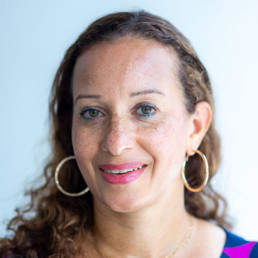
Written by Caroline Davis
Caroline Lucy Davis, International English Teacher & Diversity, Equity and Inclusion Advocate with a particular interest in the intersection of gender and race.
This article, which was presented at the AIELOC (Association of International Educators and Leaders of Colour) online conference 2019, discusses my experience of working on DEI initiatives where there was evidence of clearly inauthentic and tokenistic practice to achieve certain targets and tick box exercises. My journey is one of discovery to disruption to learning and exiting one educational organisation’s version of cultural relations and DEI work.
I became a member of my organisations DEI team and discovered a fractured, non-communicative, barely functioning group receiving very little guidance. If I examine my reasons for seeking out the team at the time I did, it is really quite simple and why others may do the same. I was struggling with certain issues surrounding gender in particular and I wanted an outlet. I would later learn that I was certainly not alone in my experiences. My experiences also resurfaced my long-term interest in social issues and experiences of marginalisation. I found the lack of initiative and direction of the DEI team very infuriating and was keen to move things forward.
So I found other ways to impact DEI initiatives through external volunteering opportunities sometimes connected to the organisation. I joined local and expatriate women’s groups, ran International Women’s Day events and was involved in a Global Race and Culture Working group. I networked internationally and it was this extending of my circle which was very enlightening and liberating for me. After quite some time of learning and leading more these initiatives, as well as feeling frustrated by the lack of movement on issues, I became lead for the DEI team. Excited, I threw myself into my new shiny (unpaid!) role in an area that I felt passionately about.
I researched and thought carefully about how I would establish a representative team and one that would work on the areas of EDI that mattered most, and were most pressing to the staff. My team was going to be functional and effective! I read about how to have inclusive meetings and communication, as I had been long-term recipient of the opposite at the organisation. I had become used to hearing the same old dominant voices and seeing the same old faces…those faces that were all so similar to one another.
Working conditions did not make communication, meetings, organising events or initiatives easy, and then there were the office and organisational politics. Despite the challenges and we had some successful, if with less attendance than hoped, events and initiatives.
At the same time, the idea of a microcosm became apparent to me when discussing issues even within the EDI team. We just did not seem to have the same understanding or experience of things. Could the EDI team, as representative of the wider organisation, be part of the problem? I indeed found clearly inauthentic and tokenistic practice to achieve certain targets and tick box exercises and even found my work accredited to someone else.
After delivering a presentation on racism in the UK and the lack of people of colour at senior leadership in the organisation, a manager approached me to say they had never noticed any racism and that was why they were so proud to work for the organisation. It was alarming that evidence can be so clearly under one’s nose, but remain unseen. Do we need to see racist acts to figure out that racism must be at play if there are no people of colour at senior leadership levels?
Clearly DEI teams can be unhealthy microcosms of wider organisations, just as classrooms, offices, schools, organisations can be unhealthy microcosms of wider society. So how do we journey through and learn from the process to inform future practice.
In my experience, the learning is the work and it is as rich, as it is exhausting. Keep a record of what you learn and how you learnt it. Seek out opportunities and reach out to the wider network. Stretch your microcosm bubble, perhaps you can burst it! By expanding my network and volunteering, I came to understand that there is a bigger world out there and people who see what you see, and want to make a genuine difference. I learned a great deal and despite the apparent silence, I believe I did disrupt things. I had felt invested and at the same time captive there and in the end decided that it was best for me to exit that educational organisation’s very outdated version of cultural relations and DEI work. This is how to journey through, learn from the process in order to inform your future practice.
Anti-bullying beyond Anti-Bullying Week

Written by Hannah Glossop
Head of Safeguarding at Judicium Education. Previously a Designated Safeguarding Lead and Assistant Head, Hannah now leads audits and delivers training to support schools with all aspects of their safeguarding.
2021 was yet another year where we saw a raft of deeply worrying examples of bullying. Research from the Anti-Bullying Alliance highlights that bullying continues to play a big part in young people’s lives: “Data we collected from pupil questionnaires completed between September 2020 and March 2021 also showed that one in five (21%) pupils in England report being bullied a lot or always.” High profile cases such as the institutional racism within the cricket world show that bullying in relation to our nine protected characteristics is a problem that goes far beyond schools.
Anti-Bullying Week 2021 brought with it a range of wonderful resources, tweets and articles in relation to anti-bullying back in November. As we march through the academic year, it is essential that we do not lose momentum and that we pay particular attention to tackling any bullying related to protected characteristics. So how can you do this?
1.Involve your pupils.
Consider an anonymous survey of your pupils, asking how many have witnessed bullying at school. This will give you a much clearer picture of how much is going on at your school and which groups are particularly targeted. Show students that you are taking bullying seriously and involve them in the policy decisions. Create a version of the bullying policy that is accessible for younger pupils.
2.Embed a culture of vigilance.
Empower both staff and students to act when they see or hear bullying taking place, either in person or online. Review the ways in which bullying is reported at your school-will all staff know how to progress bullying disclosures? Do students recognise that many nasty remarks may violate the Equality Act? Do students have a way to report bullying which avoids them having to speak face-to-face to a member of staff? Promote your anti-bullying work around the school, share it online and tell parents and carers. If pupils know you are taking it seriously, they are more likely to report it.
3.Identify hotspots.
Identify any particular areas in school, times of the day or online platforms where bullying seems to be taking place more frequently. Where possible, increase supervision in worrying areas or at problematic times of the day. If much of your reported bullying is taking place online, use external resources such as your Safer Schools Officer to explain when online abuse crosses a line and becomes illegal activity-for example hate crime and blackmail.
4.Curriculum.
Educate young people around the protected characteristics, what the Equality Act means and what impact this Act has on everyday life. Ofsted have recently updated their guidance on ‘Inspecting teaching of the protected characteristics in schools,’ noting that “No matter what type of school they attend, it is important that all children gain an understanding of the world they are growing up in, and learn how to live alongside, and show respect for, a diverse range of people.” In addition, the Proposed changes to Keeping Children Safe in Education 2022 include a new section on schools’ obligations under the Equality Act 2020, adding schools, “should carefully consider how they are supporting their pupils and students with regard to particular protected characteristics – including sex, sexual orientation, gender reassignment and race.”
5.Record and review.
Paragraph 78 of the Ofsted’s School Inspection Handbook lists the “Information that schools must provide by 8am on the day of inspection” and includes:
- “Records and analysis of bullying, discriminatory and prejudiced behaviour, either directly or indirectly, including racist, sexist, disability and homophobic/biphobic/transphobic bullying, use of derogatory language and racist incidents.”
Rather than seeing this as a mere Ofsted “tick box” exercise, use these records to fully explore which forms of bullying are happening within and around your school. Ensure that each reported bullying instance is recorded, using your behaviour management or safeguarding reporting mechanisms. Investigate any trends in these reports, share these with governors and senior leaders and take meaningful action to address these. For example, if disability-related bullying is becoming prevalent, think about what resources are needed to both educate children and show them that this form of abuse will not be tolerated.
Over the coming months ahead of the next annual Anti-Bullying Week, bear the above in mind and remember that embedding some of these ideas could make many of your students feel much less segregated from school life and much more likely to thrive.

